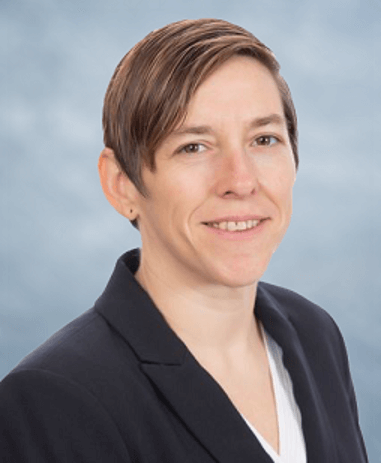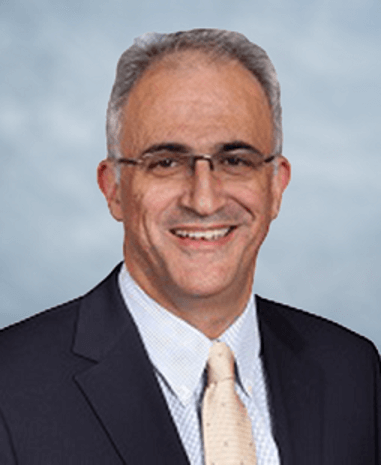What is Tech Data currently doing to support solution aggregation?
Maghen Hannigan (MH): I would break that into three things that the team focuses on today when it comes to helping our vendors work together to deliver multi-vendor solutions to the channel:
- We deliver partner enablement
- We complete or enable the execution of those multi-vendor solutions
- We wrap services around the solution
When we think of the partner experience, as new solutions or business requirements come out, our role is to help design, configure and fulfill the customer needs through the partner. By enabling our partners to leverage our various experts across the organization, we can help scale their business.
Tell us a little about the term “orchestration” and how it differentiates itself from solution aggregation? What is Tech Data doing in this area?
Sergio Farache (SF):
Solution aggregation is the ability to put together a combination of different technology products and services with some level of intellectual property (IP) to deliver a business outcome.
This can be as simple as taking infrastructure-as-a-service, putting software-as-a-service on it, adding a physical router to implement the connection, and then you create the backup solution for the customer. It can also be as complex as a vertical healthcare solution that can involve remote patient diagnosis, where you might have an iPad, a set of software that collects IoT sensor data from the patient, and then remote office and cloud-enabled connections for the doctor to have the evaluation. There are multiple ways this can go, but in the end, so much of solution aggregation is around the ability to combine product and services with some level of IP, which is the big difference. It is not necessarily just a bundle of three things that you sell together, it’s a combination that has a purpose and provides an outcome.
For Tech Data, we have many examples of solution aggregation within the organization, either from our ability to integrate converged and hyperconverged systems like we have been doing already for some time, to other (new) examples in the cloud. In those cases, we are facilitating or doing the activity. When you talk about orchestration, It is about enabling others to do it. We put elements like data platforms, tools, and access to supply chain activities for others to do solution aggregation. We help them simplify construction of their own solutions. Then we help them to not only build the solution but deliver the solution to other markets. Orchestration is not only to enable, but actively help them to expand their market and reach a larger community. In some way, it finally connects the producers (like ISVs) with consumers that are end users that require that service independently where they are located.
What is the significance of traditional distributors moving into modern solution aggregation and orchestration model?
MH: Distributors are the best positioned within the supply chain to enable solution aggregation for a couple of reasons:
- We maintain all of the relationships with the vendors across our line card and are helping them get to market
- We also have the relationships with the resellers for delivering those (vendor) solutions to the end customer
If you look at the financial perspective of how we consume technology, the services we can wrap around the technology, helping vendors to partner with each other, helping to build blueprints. We’re moving into different lenses; if I’m trying to enable a partner from a vertical perspective, Tech Data has resources that specialize in healthcare and finance and government solutions. If I’m looking at it from a technology perspective, we have practice builders that help partners move into spaces that they’ve never been before or take their traditional hardware reseller and move it to the cloud, that’s quite the undertaking. The investments we’ve made help partners understand what the kinds of resources are they need to hire, how to transition that business, what’s the financial impact. We have all of the relationships with the vendors to help enable those partners as they make those decisions to determine how they mingle with each other to deliver an end-to-end solution that’s going to solve a business problem for their customer.
SF: Distribution for many years was a two-tier model where basically the vendor goes to the distributor, the distributor goes to the partner and the partner goes to the end user. That is a model that works and will continue working for a long time, but is a linear value creation, where the value is created through those interactions. When you talk about solution aggregation, you are talking about building a solution that involves multiple connections and different members of the IT ecosystem.
“That is not only a linear relationship, but is a multi-point, multi-directional connection where you need an ISV, you need the cloud, you need security, you need an infrastructure vendor, you need IP, you need integration capabilities, services capabilities.”
When we talk about the concept of orchestration, it’s enabling access to this multi-directional capabilities to connect with multiple players, put all of them in a place where they can interact and where you can combine those components and then deliver a final solution to any specific problem that a customer has. The solution aggregator is perfectly in the center of the ecosystem, until now, distributors have been acting from that transactional layer in the two-tier linear model, but now we are evolving to the orchestration model.
Where do you see orchestration evolving to over the next 3–5 years that might not be happening today?
SF: This is what I would call a marathon, not a sprint. This is something that goes in steps (1.- Now, 2.- In progress, 3.- Next, 4.- Future) and we are evolving in that direction:
- We are moving now to creating those solution aggregation capabilities in a way that we create those solution factories, for example, where we are putting these concepts together through:
- Click-to-run solutions that are easy to deploy and very automated.
- We have the concept of ready-to-deploy solutions that are basically pre-architected solutions, but still need a service component.
- And finally, we have blueprints that are a schematic element that can be used.
- Everything that we do and learn, we are driving processes and automation into a platform and other mechanisms. Now, we can expose those elements to our partners, our ISVs and our communities in a way that they can use the same access to these technologies, supply chain and other elements to build their own solution. We are helping others to be more effective, lower cost, reduce time-to-market and make it simpler.
- Now that you have matured on that space, you need to reach scale. We will help them push that back to other markets, to other partners, to other ecosystems in a way that the work and the investment that you do is not limited to the scope that you serve, but expand that to the scope that we can get.
- How we interact with other ecosystems. Let’s say, as a healthcare example, that we work with some elements of healthcare, but we don’t have access to all the devices that a healthcare provider will need. But other ecosystems that we can connect and provide access to our partners through that connection to get access to those additional components that people really need to finally fulfill that complete solution in a vertical market. When we talk about three to five years, it’s how we go through this list of steps to reach that capability, where we really simplify the ability for our ecosystem not only to design, but to create, to deliver and to provision those solutions in the more effective way with bigger scale.
What does a solution aggregation conversation with one of our channel partners look like?
MH: The conversation is less about the product they want to buy and what’s the price of that product; it’s really transitioning to “what’s the space you’re ultimately trying to penetrate?” As an example, we’re seeing large opportunities around remote working. If you start to think about it at the Edge, the devices, how to deploy the devices, how to manage those devices, how to continue to refresh them, how to link that back into central management — those are the kinds of conversations we’re having with our partners. It’s really helping them to build out a whole strategy around how we can help them bring the different pieces of the solution together, build them, deploy them, support them and eventually refresh them.
Do you have any closing thoughts that you’d like to share?
MH: The one thing that should never be lost on our partners is understanding that the key differentiator with Tech Data is that we have all these elements under one roof. If you think about the back-end engine around services and support that all reside within the Tech Data ecosystem to take cost out of your business to scale. We have the components business to help design and optimize the supply chain for solutions. We also have the front-end engine of demand generation, which is all of the enablement around vertical markets, technology, reach for partners. If you look at the landscape of other distributors, I don’t think there’s another distributor that has made the kind of investments that we’ve made to ensure that we have the end-to-end coverage from the engine to the support of these new solutions and the evolution of technology in the market and in turn, the scale across the customer ecosystem.
SF: When we move in this direction, it’s not that we have this great idea and we put two things together and we call it done.
“We are addressing a significant change in how technology is consumed.”
Technology used to be a less complex environment, where I would select a specific product and do my own thing because that was enough. Now, customers are realizing the real impact of how the technology applies to solving for technology-specific needs or vertical-specific needs. If you want to succeed as a partner working with end users, you need to adapt to the needs that you are trying to cover and not just on the costs or how you’ve always done things in the past. It is important that we all understand that we are doing this for a reason: satisfying the needs of the market to the specific end user who will buy these products or solutions or components to achieve a goal in their organization.
The beauty of this model is that this applies to all areas of business. What may start as a simple product can evolve into multiple, detailed implementations. We, as an organization, along with our partners, need to understand that we are privileged to be in the market that we are. But, we need to transition from the linear value-creation to the concept where we put more elements together in a way that provides a full solution for the end user’s requirements.
As we continue to look into the evolution into solution aggregation, be on the lookout for additional Authority Blog content, as we dive into the benefits that our channel partners are seeing in this modern-day solutions-based, customer-focused approach to technology.



